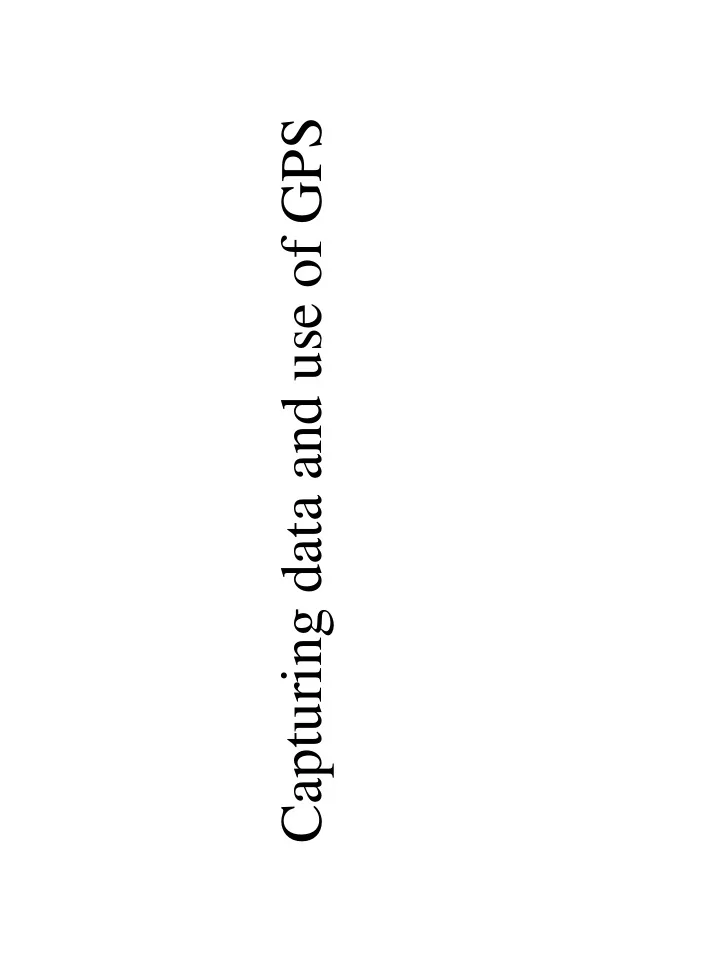

Capturing data and use of GPS
Capturing data GIS GPS Paper maps Coordinates Satellite images
What is a GPS? Global Positioning System A network of satellites that continuosly transmit informations Making possible to identify locations
How works a GPS
Possible sources of errors • Getting signals from 3-4 satellites GPS calculates its position by triangulation • The number of satellites “in view” depends on the time of day and where you are on earth • Unfortunately satellites are often hidden behind mountains, buildings and even forests • The more satellites that can be tracked the greater the chance of an accurate position fix.
Sources of Errors in GPS • Poor signal reception can be cause by – Blockage by buildings, hills, trees and even your own body – Weak batteries – Interference from other electronic equipment in use nearby
This is your GPS
Pages featured in your GPS
Menu button
Acquiring satellites
Acquiring satellites Latitude Horizontal position Longitude Latitude Altitude Longitude
Acquiring satellites Horizon 45° above the Horizon Overhead
Defining your position
Defining your position the average position
GPS use • The GPS gives you the possibility to define your position with coordinates: – Latitude – Longitude – Altitude
The two coordinates together do the earth’s grid Latitude and Longitude are expressed in: Degrees, Minutes, Seconds Long. W 73° 59’ 15 ’’
Latitude, longitude, decimal degrees • Latitude and Longitude can be also expressed in decimal degree Decimal degrees = Degrees + (Minutes/60) + (Seconds/3600) 73° 59´15 ´´ = 73,9875
Basics Latitude: 90 North 1 Equator 90 South Longitude: 180 West Null Meridian 180 East
To allow to pass from a curved Earth to a flat map
Mercator projection
Advantages of UTM • Square grid allows easy measurement • Cartesian coordinate system • Metric unit • No negative numbers
Connect your GPS with your computer using appropriate application, extensions or softwares
Recommend
More recommend